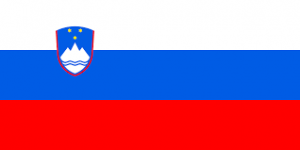Language/Slovenian/Grammar/Imperfect-past-tense
Welcome to this comprehensive Slovenian grammar lesson on the imperfect past tense. In this lesson, we will delve deeper into the structure, usage, and examples of the imperfect past tense in Slovenian.
What is the Imperfect Past Tense?
The imperfect past tense is one of the four main past tenses in Slovenian, the others being the perfect past tense, pluperfect tense, and historical present tense. The imperfect past tense is used to describe actions or events that were ongoing or repeated in the past. It can also be used to set the scene or provide background information about past events.
Forming the Imperfect Past Tense[edit | edit source]
To form the imperfect past tense, we first need to identify the infinitive form of the verb. For example, the infinitive form of "govoriti" (to speak) is "govoriti". Next, we need to remove the -ti ending from the infinitive to obtain the stem, which in this case is "govor-". Finally, we add the appropriate endings to the stem depending on the person and number.
Here are the endings for the imperfect past tense in Slovenian:
| Singular | Plural | |
|---|---|---|
| 1st person | -l sem | -li smo |
| 2nd person | -l si | -li ste |
| 3rd person | -l je | -li so |
Let's take the verb "govoriti" as an example and form the imperfect past tense:
| Singular | Plural | |
|---|---|---|
| 1st person | govoril sem | govorili smo |
| 2nd person | govoril si | govorili ste |
| 3rd person | govoril je | govorili so |
As you can see, the stem "govor-" remains the same for all persons and numbers, and we only add the appropriate endings.
Usage of the Imperfect Past Tense[edit | edit source]
The imperfect past tense is used to describe past events that were ongoing or repeated. It is often used to provide background information or set the scene for a story or narration. Here are some examples:
- Včeraj sem govoril s prijateljem. (Yesterday I was speaking with a friend.)
- Vsak dan smo hodili v šolo. (Every day we used to walk to school.)
- Vedno si gledal televizijo ob tej uri. (You always used to watch TV at this time.)
- Ko sem prišel, so vsi govorili o tebi. (When I arrived, everyone was talking about you.)
In each of these examples, the action or event described by the verb was ongoing or repeated in the past. Note that the imperfect past tense is often used in conjunction with the perfect past tense (which we will cover in another lesson) to provide a more complete description of past events.
The imperfect past tense can also be used to describe hypothetical or imagined past events. For example:
- Če bi bila bogata, bi potovale po svetu. (If I were rich, I would travel the world.)
- Ko sem bil otrok, sem si želel postati astronavt. (When I was a child, I wanted to become an astronaut.)
In both of these examples, the verbs are in the imperfect past tense, but they are used to describe hypothetical or imagined past events.
Conclusion[edit | edit source]
The imperfect past tense is an important tense in Slovenian grammar, used to describe ongoing or repeated past events. It is formed by removing

